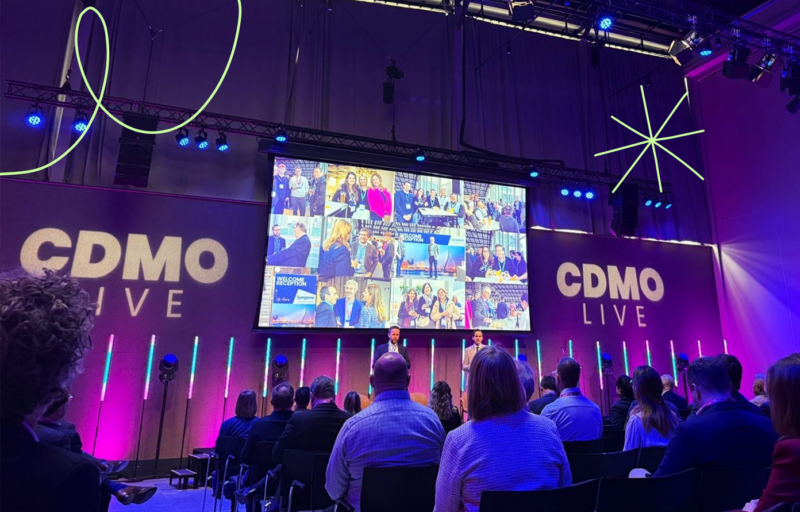industry-news:
Trends Changing Biopharma: How is small molecule drug development transforming?

With examples such as aspirin and penicillin, small molecule drug development has changed the world time and again, producing medications that have saved countless lives. These days, with demand for biologics to treat unmet diseases growing rapidly, is small molecule development in decline?
The market seems to suggest otherwise, as despite the rise in biologic-based clinical trials, small molecule drugs have a predicted compound annual growth rate of 7.97%, from $75.96 billion in 2022 to $163.76 billion 2032.¹ Small molecule treatments also comprised 19 of the 38 FDA-approved drugs in 2022.² Aided by the high rate of regulatory approval (43% from phase 2),³ which is more than triple that of biologics, the small molecule drug market is still a massive player in the pharmaceutical industry.
Considerable innovation — including access to increasingly complex compounds and enhancements in useability and patient convenience — means that the small molecule space has maintained bearing within the pharma industry and continues to play an important role in producing essential medicines for patients. So what recent trends have been transforming this sector
Increasingly complex small molecule treatments
Innovations in synthetic molecule techniques are allowing us to create increasingly complex small molecules and explore their potential to tackle unmet treatment needs. Earlier this year, an orphan drug, Filspari, used to treat proteinuria, a rare kidney disease, was approved by the U.S. FDA.⁴ This complex molecule contains multiple aromatic rings and functional groups and requires a number of synthetic steps under harsh conditions to produce.
Complex small molecules are often synthetically challenging, incorporate several pharmacologically active moieties (such as chiral centers) and functional groups and, on average, have higher molecular weights. However, there is still demand for short and accelerated timelines, especially as small molecule drug substances are relatively easy to scale and reproduce. In addition, solubility and bioavailability issues can often incur as a molecule becomes more complex. However, their targeted activity against diseases makes them desirable targets, and innovation in formulation techniques and the addition of excipients aim to overcome these issues.
HPAPIs on the rise
Highly potent active pharmaceutical ingredients (HPAPIs) are efficacious drugs that deliver pharmacological effects at lower concentrations; this means lower dosage requirements, reducing the risk of side effects when administered to the patient. HPAPIs are critical in the pharma industry, with more than 25% of drugs worldwide classed as highly potent.⁵ Because of this, many companies are investing in and growing their HPAPI capabilities, exploring potential treatments for chronic diseases, including cancer, cardiovascular diseases and diabetes.
However, high potency leads to strict requirements for safe handling, using specialized equipment and completing extensive risk management and assessment documents beforehand. This is to provide product containment during manufacture to ensure safe handling and operator safety. Outsourcing these tasks to CMOs and CDMOs with the required equipment and capabilities already in place can speed up development and mitigate potential risks of HPAPI handling.
Artificial intelligence and machine learning aid speed
To keep up with demand, investing in robust manufacturing and operating procedures is essential to help accelerate production. Advancements in artificial intelligence (AI) and machine learning aid process optimization, enable automation, and increase efficiency.
AI is making a huge impact and helping to change the small molecule industry in several ways. This includes improved or novel chemistry, better success rates, quicker and cheaper discovery processes, and streamlined process workflow.
Impact on the industry
Although small molecule drugs have been around for a long time, their manufacturers remain significant players in drug development, and innovation in the space is continually driving therapeutic advancements. A key area of the pharma industry, small molecules will continue to play their part in delivering key medicines to patients.
Working as a specialist life sciences marketing agency, ramarketing makes it a priority to keep up to date with past, current and future trends as the industry adapts to constant changes. We help companies in the industry grow; contact ramarketing today to discover how we can work with you.
- Small Molecule Drug Discovery Market Size, Report By 2032 (precedenceresearch.com)
- Senior, M. Fresh from the biotech pipeline: fewer approvals, but biologics gain share. Nat Biotechnol (2023). https://doi.org/10.1038/s41587-022-01630-6
- 2023’s Market Outlook For Cell And Gene Therapies (outsourcedpharma.com)
- Filspari (sparsentan) FDA Approval History – Drugs.com
- Harnessing the power of HPAPIs: key considerations (manufacturingchemist.com)
Related news, insight and opinion




